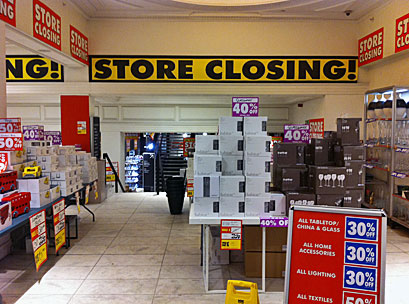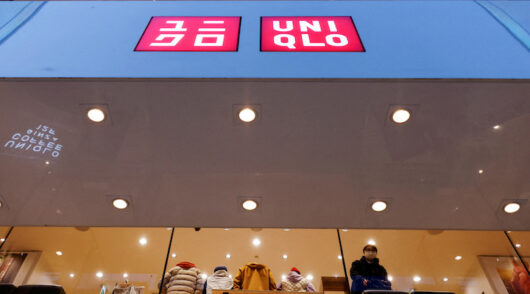Australia’s retail property operators entered 2012 in the midst of what Commonwealth Bank retail analyst Andrew Mclennan calls a “technology-induced recession,” in which online sales are growing strongly while store sales are stagnant and quite possibly even going in reverse.
Retailers continue to complain about “consumer caution,” despite the fact that when it comes to things like foreign travel and buying from offshore internet sites, caution has been little in evidence.
On the contrary, consumer spending has been growing at a healthy 5.7 per cent pace in 2011, while retail grew at 2.1 per cent and non-food retail at one per cent.
The data suggests that the attentions of the buying public have wandered away from the nation’s stores.
Some of the slow non-food retail sales trend can be attributed to deflation in key discretionary categories such as apparel and consumer electronics, but that deflation is partly attributable to the growth of e-commerce itself.
As in other mature markets such as the US, a shift in consumer behaviour is occurring, and shopping centre operators are very sensitive to it. The shift is comprised of a reweighting of consumer preferences toward experiences, technology and services.
When it comes to shopping, the search for rock bottom price that used to be the preserve of the time rich and money poor, is now the blood sport of the tech-savvy.
On top of all this, fashion continues to be redefined by consumers to include things that don’t have anything to do with clothing, raising difficult merchandising issues for shopping centres and soft goods retailers alike.
Mainstream retailers are beginning to take important steps to stop the rot.
In America JCPenney has announced a radical change of strategic direction for its 1100 department stores, including the creation in the centre of each store of a pseudo “town centre” that tries to mimic what developers have been doing at the shopping centre level.
Meanwhile, Target is sending off testy letters to its vendors telling them that they have to cooperate on a new pricing strategy so that online retailers like Amazon can’t use Target stores as showrooms.
Adapting to change
The unease of the retailers with big real estate portfolios extends to the shopping centre operators themselves.
In the US, despite a drop in unemployment and two years of modestly rising retail sales, occupancy at shopping centres has hardly budged from the low-90s, and rents on average are still falling, according to data from major commercial real estate research firms.
In Australia, the fundamentals are firmer but the disquiet is just as palpable.
There are some awkward questions floating around about the industry’s adaptability to the changes in consumer behaviour underway.
The global shopping centre industry has been able to respond to challenges in the past, sometimes brilliantly.
When department stores came under siege, shopping centres found a plethora of new anchor types from discounters to fitness facilities.
When women’s apparel specialty was being walloped by unisex brands in the 1990s, the latter were welcomed into centres with open arms. And when the unisex brands themselves went under the cosh from global fast fashion players a decade later, fast fashion started showing up everywhere in shopping centres.
When consumers demanded better food in order to commit to longer shopping trips, restaurants and more elaborate food courts arrived on the scene. They demanded entertainment, and cinemas, ice rinks and theme parks appeared.
Shopping centres have responded to planning dictates also, often turning them to advantage.
For example, they took on additional uses such as offices and residential units to densify land use, and in so doing enriched the shopping centre trade area.
Adaptation has not been limited to tenant mix. Shopping centre design has moved on as well, from the revolutionary but simplistic Southdale Center in Minnesota opened in 1956, to all kinds of hybrid, enclosed and open air formats.
The common pre-requisite for these responses to change has always been flexibility in the thinking of retailers, developers and planning systems.
Such flexibility is now required in spades and must extend beyond tinkering around the edges to a comprehensive rethink of what a shopping centre is and does.
Zoning and planning
When searching for the major roadblocks to such flexibility in Australia, zoning and planning prescriptions are a handy place to start.
The recent actions of the Victorian planning ministry with regard to restricted retail premises, or bulky goods centres, is a good example.
In the planning ministry’s petting zoo, some species seem to get more of a pat than others. Its concessions to the bulky goods sector that increase the number of hard goods categories they can house and relax the minimum shop size threshold amounts to incrementalism without vision. Bolder steps are required.
What the planning system has done, in essence, is create the conditions for oversupply of bulky goods space and then belatedly started throwing it some extra scraps to keep it from falling over. It has spent years breeding an animal that it suspects can’t exist in the wild.
A return to the wild is one of the things Australian retail needs to move with the times and get shoppers excited about stores again.
Last year, the Productivity Commission recommended that business zoning be broadened and prescriptive planning requirements “significantly reduced”.
Further, the Commission wanted “to allow the location of all retail formats in existing business zones to ensure that competition is not needlessly restricted”.
This didn’t mean propping up some formats (bulky goods centres) at the expense of others (conventional shopping centres); rather it meant pitting all retail formats against each other within broadly defined commercial zones, thus permitting the elimination of sick space and the emergence of stronger hybrid formats that are better able to meet the needs of contemporary consumers.
In all fairness, zoning and planning are not the only obstacles to progress for Australian retail. However, in order to thrive again the industry needs to have unnecessary impediments to flexibility removed.
Otherwise, it risks being placed at a serious competitive disadvantage for years – ground lost that it will have difficulty clawing back.
* Michael Baker is principal of Baker Consulting and can be reached at michael@mbaker-retail.com and www.mbaker-retail.com.






